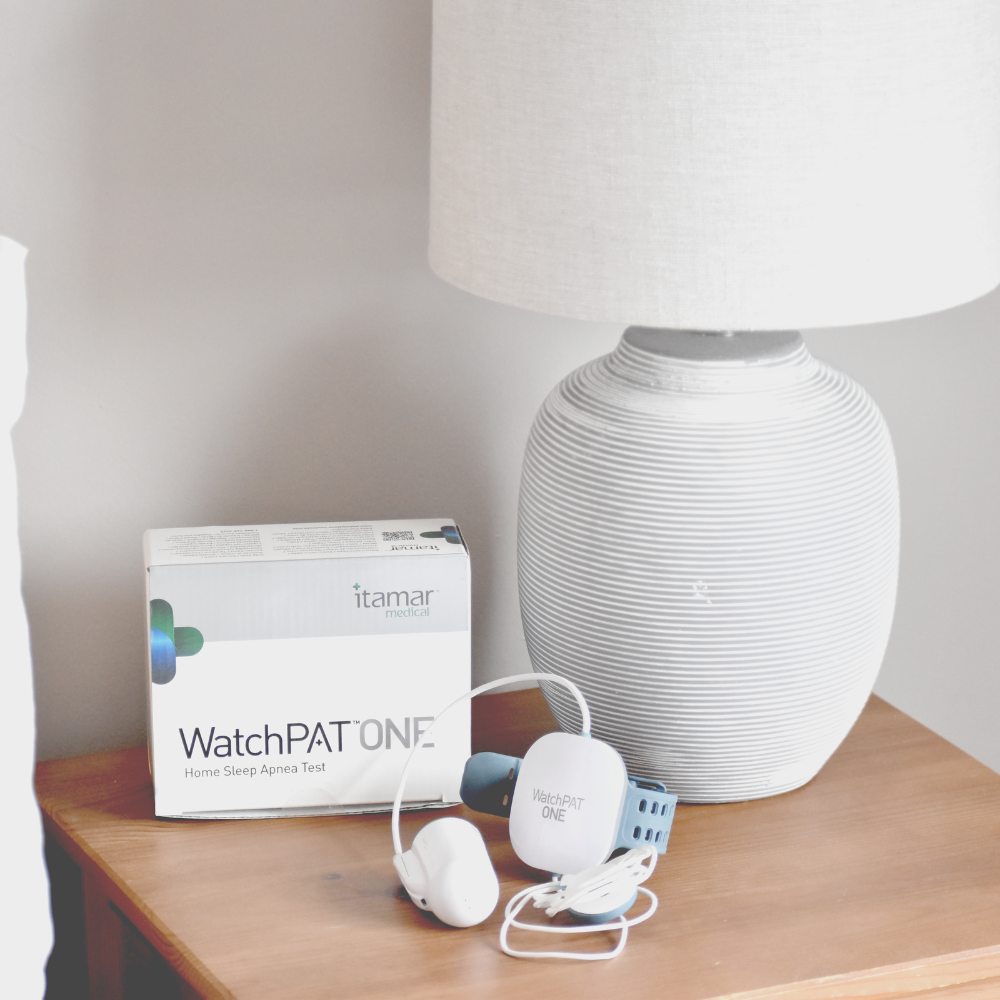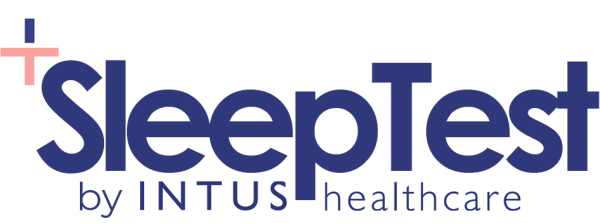Fact Checked
Intus Healthcare’s writers, customer service team, and sleep experts review and ensure this information is accurate.
Last updated on March 31st, 2025 at 11:25 am
Have your eyelids ever drifted shut while you’re at the wheel?
Driving fatigue causes around 10-20% of road crashes and 8% of all road traffic accidents and is a sign of the sleep disorder Sleep Apnoea.
1 in 8 drivers admit to falling asleep at the wheel (1); this article will examine the link between driving fatigue and Sleep Apnoea.
Table of Contents
Falling asleep while driving: Driver fatigue and car accidents
It’s scary, isn’t it? If you experience driving fatigue, it could leave you wondering, what if I hadn’t woken up immediately?
Yes, sleepiness is certainly a bit frightening. It’s probably happened more often than you can count. If that’s true, you may have a sleep disorder & not even realise it.
Sleep disorders make it difficult to concentrate when driving, decreasing awareness and contributing to thousands of road accidents.
The level of sleepiness directly affects your reaction time, with individuals suffering from obstructive sleep apnoea (OSA) experiencing slower responses due to persistent tiredness.
A simple way to determine if you are at risk of Sleep Apnoea is to use our Free Sleep Apnoea Risk Test below to measure your risk.
UK road accidents due to driving fatigue
According to the Department For Transport (DFT), around 300 people die each year due to driver fatigue, and 40% of sleep-related accidents involve commercial vehicles – despite them making up about 4% of the vehicles in Britain. It is estimated that 6 am is when drivers are most likely to fall asleep – according to the AA, up to 13% of drivers admitted to falling asleep whilst driving, and 26% of drivers said their sleepiness was due to lack of sleep the night before(2).
Obstructive Sleep Apnoea (OSA) is a serious disorder that causes chronic sleep deprivation and excessive daytime sleepiness. This medical condition can have a detrimental impact on your overall health, as your body is deprived of the necessary restorative sleep needed for optimal functioning.
The DVLA has specific guidelines to follow regarding fatigue at the wheel; you can find information on our DVLA and Sleep Apnoea page.
Feeling drowsy while driving can also be linked to the use of prescription and over-the-counter medications. Some medications can have the side effect of causing drowsiness, making it unsafe to drive while under the influence. Even if you do not fall asleep at the wheel, the excessive drowsiness can:
- Cause you to pay less attention to the road
- Affect decision making
- Slow your reaction time
Signs of drowsiness
- Difficulty focusing
- Difficulty keeping your eyes open
- Trouble keeping your head up
- Drifting from lanes
- Yawning repeatedly
- Missing traffic signs
- Consistent jerking
What is OSA?
Obstructive Sleep Apnoea is when a person’s upper airway becomes partially or completely blocked during sleep, causing breathing pauses. These breathing pauses are also known as Hypopnoeas and Apnoeas and can happen over 50 times every hour during sleep.
OSA is a serious sleep disorder affecting millions of people around the world. OSA affects around 4% of men and 2% of women and becomes increasingly common over the age of 40(3).
Related article: Can you die from Sleep Apnoea?
A few questions to help you know if you have OSA
One in five people suffer from mild Sleep Apnoea; here are some symptoms:
- Are you sleepy during the day and have trouble concentrating at work?
- Do you snore? Has your partner complained of snoring?
- Do you ever wake up with a snort, gasping for breath, like you’re choking?
- Do you suffer from morning headaches?
- Are you overweight or obese?
- Do you have a large neck?
Different medical conditions can put you at a higher chance of developing Sleep Apnoea; these conditions can also be developed due to untreated Sleep Apnoea. These include:
- High blood pressure
- Depression
- Coronary artery disease
- Stroke
- Congestive heart failure
- Heart attack
- Atrial fibrillation
- Type 2 diabetes
If you have answered YES to many or all of these questions, you may have Obstructive Sleep Apnoea.
Health risks of Sleep Apnoea
Getting tested for Sleep Apnoea is crucial because if left untreated, there are significant health risks that individuals may face.
If you have been diagnosed with high blood pressure (Hypertension), Sleep Apnoea can worsen it.
Waking up frequently during the night puts stress on your body – increasing your blood pressure.
Brain damage –The brain can be significantly affected by breathing pauses during the night, as a result of both insufficient oxygen intake and disrupted sleep patterns. Memory loss and brain fog are common symptoms of the disorder. Research shows that people suffering from untreated OSA have trouble converting short-term memories into long-term ones. Increasing the chance of developing Alzheimer’s disease (4).
Depression and Anxiety – Research has found that those who suffer from Sleep Apnoea have lower levels of GABA and higher Glutamate in the brain. The imbalance of these chemicals increases mood swings and contributes to brain damage. GABA is a brain chemical that has a calming effect, helping control anxiety and other psychological conditions (depression, bipolar and anxiety). Research has found that those with lower levels of GABA experience major depressive episodes and anxiety disorders (5).
Heart disease – The stress OSA puts on the body means sufferers are more likely to have heart attacks and have a 140% higher risk of heart disease (6).
Type 2 diabetes – Sleep Apnoea is common among people with diabetes.
Driving fatigue – If you haven’t slept well, you’re at high risk of falling asleep at the wheel.
The simple overnight sleep test
To determine if you have Obstructive Sleep Apnoea, a simple test is available. This sleep assessment, known as “overnight oximetry,” is specifically designed to measure your body’s oxygen levels while you sleep. All you need to do is wear a small cuff on one of your fingers during your sleep, and that’s it!
The finger cuff is linked to a monitoring device that records your nocturnal oxygen levels. This data helps sleep specialists determine if you may be experiencing OSA.
The bad news about NHS Sleep Apnoea testing
The NHS provides an at-home sleep test that requires multiple appointments:
- Appointment with the doctor
- Appointment to collect the equipment at the hospital
- Appointment to discuss the result with the doctor
- …and most likely, an appointment to return the equipment to the hospital
This assumes that the oximetry test catches Sleep Apnoea at the first attempt. It’s very possible that many individuals need a more in-depth study, such as a limited sleep study or overnight polysomnography (PSG).
This process can take several months, waiting for various appointments.
In-Home Sleep Test
You can take a discreet, confidential, in-home sleep test and get your results quickly. You’ll get your results directly, and the NHS & DVLA won’t see it unless you share it.
- Reliable – An in-home sleep test is a reliable alternative to the NHS sleep clinic.
- Convenient – Delivered to your doorstep overnight.
- No time off work – You won’t travel to the hospital to get the testing device or return it. You won’t need appointments with a doctor before or after taking the test.
- Affordable– The cost of an Intus test is £195.
- Comfortable – Testing is done at home, so there’s no overnight stay in the hospital.
- Accurate results – The test is evaluated by NHS-trained sleep specialists, with accuracy comparable to PSG testing.
- Fast results – You will receive your results within seven working days.
- Confidential – We never share results with your GP or the DVLA. We will only share the test results with you, and you will take it from there. You can pursue the treatment you need.
This is a private test conducted from the comfort of your own bed. The simple-to-use equipment is discreetly sent to you.
Depending on your chosen test, it is either returned (standard test) after use or disposed of (rapid test).

Home Sleep Apnoea Test
The test monitors your heart rate, snoring intensity, blood oxygen levels, body positioning, and more, providing accuracy comparable to testing used in sleep clinics for in-depth sleep analysis.
The simple-to-use test takes just one night to complete, and results are returned within two working days after completion.
Our experienced NHS-qualified sleep professionals independently analyse all studies, providing follow-up advice and support.
Our sleep test provides the most efficient and affordable way to confirm Obstructive Sleep Apnoea professionally.
Treatment Options for Sleep Apnoea
Treatment can make all the difference! If you get started on treatment for Sleep Apnoea, you will get the quality, restorative sleep you need.
Once your sleep test is completed, the healthcare professional will recommend the best treatment option for you. There are a number of treatment options available, including; diet and exercise advice, positional therapy, mandibular advancement device (MAD) and Continuous Positive Airway Pressure (CPAP) therapy.
Continuous Positive Airway Pressure (CPAP)
CPAP is the most common treatment method for Sleep Apnoea. A machine provides pressurised air through a face mask to keep the airways open during sleep. This prevents the airway from collapsing, allowing you to sleep better and helping to maintain correct oxygen levels during the night.
CPAP therapy is used by millions of people worldwide every night. Here we explain what it is, how it works, and how you can get equipment should you need it.
What is CPAP therapy?
The concept is relatively simple: blowing air into the user’s airway creates positive pressure. This helps keep the airway open and free of obstructions.
Numerous clinical studies have proven the effectiveness of CPAP. The therapy reduces the number of apnoea and hypopnoea events and, therefore, reduces sleepiness and the risk of developing other health complications.
You may be able to obtain the equipment via the NHS (although waiting times can be several months), or you can purchase it privately.
Mandibular Advancement Device for Sleep Apnoea
Oral Appliance Therapy (OAT) uses a splint worn in the mouth to move the lower jaw slightly forward to allow for more airflow. As the throat narrowing or closing causes OSA, positioning the lower jaw further forward creates more space inside the throat for the passage of air and reduces the frequency of apnoea’s and hypopnoea’s as a result. In many cases, snoring is also reduced when using this treatment option.
The splint can be either a custom-made appliance fitted by a dentist or a much lower-cost ‘heat and bite’ device that provides simple customisation. OAT is a clinically proven method of treating mild OSAHS, and some find it more comfortable and less invasive than CPAP.
AMandibular Advancement Device is only advised for those with milder OSA.
Positional Sleep Therapy
In many cases, snoring and OSA are more severe when the person is on their back, so positional therapy is used to keep them sleeping on their side.
This may be a good option if your partner has noticed that you snore or have breathing pauses more often (or exclusively) when you are on your back. Treatment involves wearing equipment such as a bumper belt to gently prevent you from rolling onto your back during sleep. This can be an effective technique for keeping snoring and mild OSA under control.
Nutrition, lifestyle and weight loss
If appropriate, a nutrition and weight-loss program can often provide benefits. Living healthier can positively affect your sleep, OSA and many other health issues.
A direct link between excess weight, OSA and snoring severity has been shown, so if you are overweight, you may find that weight loss improves your OSA symptoms.
Alternative lifestyle changes to reduce OSA symptoms:
- Consuming less alcohol
- Quitting smoking
- Eating fewer foods that affect your sleep.
- Reducing the use of screens before you sleep.
- Regularly exercise
- Sleep on your side
Obstructive Sleep Apnoea is a common sleep disorder. However, it is a treatable condition.
Transform your life by first taking a sleep test.
Contact us for expert advice.
About Our Editorial Team
Danni is a degree-educated content writer passionate about helping those with Sleep Apnoea sleep better; she works closely with our clinical and customer care teams to ensure that each article is thoroughly researched and accurate.
Her writing aims to inform, support, and advise readers about Sleep Apnoea, helping to raise awareness and promote effective treatment options.
She has written many health-focused articles, reaching hundreds of readers annually, to help people sleep better and live healthier lives.
Lateisha King is an experienced Sleep Clinician with advanced training in polysomnography and respiratory health.
With over six years of experience, including at the prestigious Guy’s and St Thomas’ NHS Foundation Trust Hospital, she has conducted and reviewed more than 500 diagnostic sleep studies.
Her expertise in sleep science ensures that all articles align with the latest data and treatment protocols, providing readers with trustworthy and practical advice to improve their sleep health and overall well-being.
References:
- Angier, F. (2023) Driver fatigue, UK FISA. Available at: https://ukfisa.com/Safety/Safety-Library/driver-fatigue. Accessed: 12.10. 2023.
- The AA(2018) AA. THE AA CHARITABLE TRUST. Available at: https://www.theaa.com/about-us/newsroom/aa-charitable-trust-launches-drowsy-driving-campaign.Accessed: 06.02.2023.
- Young, T. et al. (1993) ‘The occurrence of sleep-disordered breathing among middle-aged adults’, New England Journal of Medicine Available at: https://pubmed.ncbi.nlm.nih.gov/8464434/. Accessed:12.10.2023.
- Kuo, C.-Y. et al.(2021) “Association between obstructive sleep apnea, its treatment, and Alzheimer’s disease: Systematic Mini-Review,” Frontiers in Aging Neuroscience, 12. Available at: https://doi.org/10.3389/fnagi.2020.591737. Accessed:12.10.2023.
- Macey, P.M. et al.(2016) “Obstructive sleep apnea is associated with low gaba and high glutamate in the insular cortex,” Journal of Sleep Research, 25(4), pp. 390–394. Available at: https://doi.org/10.1111/jsr.12392. Accessed:12.10.2023.
- Newsom, R. and Truong, K. (2022) Is sleep apnea connected to heart disease?, Sleep Foundation. Sleep Foundation. Available at: https://www.sleepfoundation.org/sleep-apnea/sleep-apnea-linked-heart-disease#references-80453. Accessed:12.10.2023.





